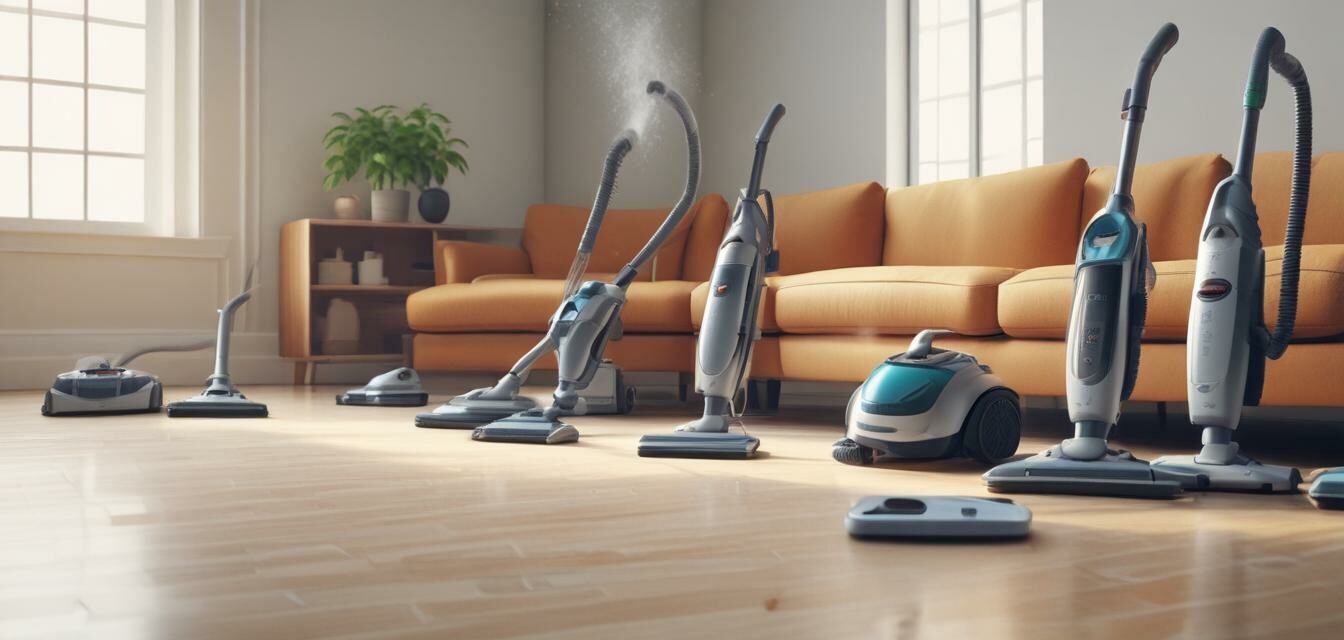
This article was generated using AI and is based on real customer reviews from the Amazon platform. It contains affiliate links, meaning we may earn a commission—at no extra cost to you. As Amazon Associates, we earn from qualifying purchases.
Essential vacuum features for allergy sufferers
If you suffer from allergies, finding the right vacuum is crucial for maintaining a clean and healthy home. The right vacuum can dramatically reduce allergens in your living space, providing relief and comfort. In this article, we'll explore the essential features to look for when selecting a vacuum that is effective against allergens.
Key takeaways
- Look for HEPA filters to capture small particles.
- Suction power is vital for removing embedded dirt and allergens.
- Bagged vacuums often trap allergens better than bagless models.
- Noise level is important for maintaining a peaceful home environment.
- Consider additional features like attachments for cleaning upholstery and hard-to-reach areas.
Understanding allergens in the home
Allergens are substances that can cause allergic reactions. Common allergens found indoors include dust mites, pet dander, pollen, and mold spores. Regular vacuuming can significantly lessen these irritants, especially when using the right vacuum cleaner. Here are the key features to consider:
1. HEPA filters
High-Efficiency Particulate Air (HEPA) filters are essential for allergy sufferers. These filters can capture 99.97% of particles as small as 0.3 microns, which includes most allergens.
2. Suction power
Strong suction power is necessary for effectively removing dirt, dust mites, and other allergens from carpets and upholstery. Be sure to check the suction ratings when comparing different models.
3. Type of vacuum
The type of vacuum you choose can impact your cleaning efficacy:
- Bagged vacuums tend to be better at trapping allergens since the dirt is sealed inside a bag.
- Bagless vacuums can release allergens back into the air if not emptied properly.
- HEPA filter vacuums are specifically designed to capture allergens efficiently.
Comparison of vacuum types
| Type | Allergen Trapping | Maintenance | Cost |
|---|---|---|---|
| Bagged | Excellent | Hassle-free; just replace the bag | Generally higher |
| Bagless | Moderate; potential for leaks | More frequent emptying and cleaning required | Tend to be lower |
| HEPA Filter | Exceptional | Replace filters periodically | Varies widely |
4. Noise levels
For households with small children or sensitive pets, noise levels can be a significant consideration. Machines that operate quietly can make cleaning less disruptive.
5. Attachments and accessories
Look for vacuums that come with specialized attachments:
- Upholstery tools for cleaning furniture
- Dusting brushes to capture allergens from surfaces
- Cretacle tools for reaching tight spaces
Additional considerations
Besides the essential features mentioned, there are a few other factors to consider when choosing an allergy-friendly vacuum:
- Weight: A lighter vacuum can be more manageable for quick clean-ups.
- Size: Consider storage space, especially if you have a small home.
- Warranty: A longer warranty can provide peace of mind.
Pros
- Effective at reducing allergens
- Improves indoor air quality
- Enhances overall cleaning efficiency
Cons
- Some models can be expensive
- Regular maintenance is required
- Heavy vacuums can be cumbersome
Final thoughts
Selecting an allergy-friendly vacuum can make a significant difference in the quality of your home's air. By focusing on essential features like HEPA filters, strong suction, and the type of vacuum, you can ensure that your cleaning routine is effective against allergens.
Be sure to explore our buying guides for more tips on selecting the right vacuum for your needs.